Powdery mildew: how to get rid of white fungus on plants
Discover how to prevent and treat powdery mildew so you get get rid of this fungal disease on your plants and crops
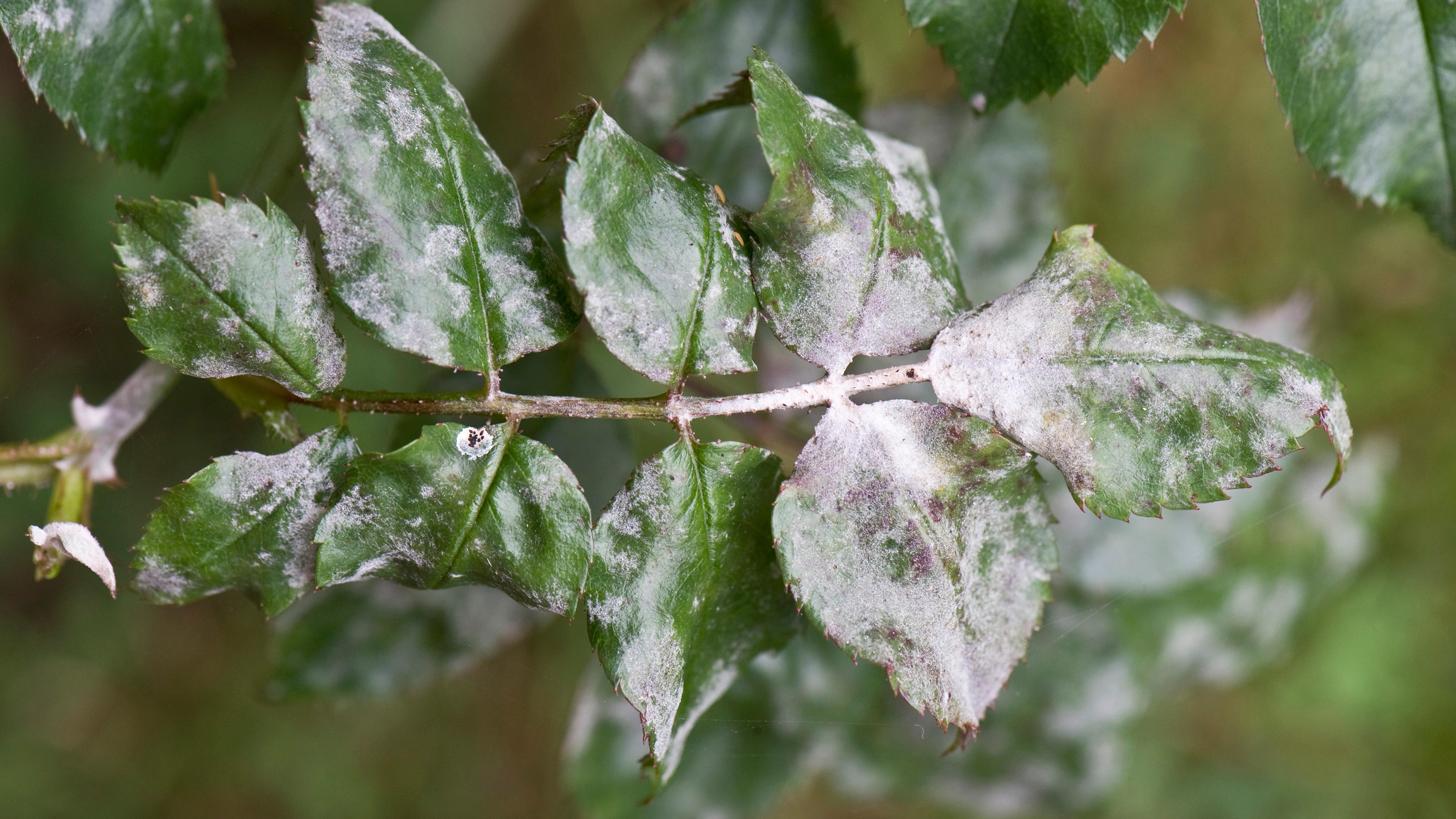

Powdery mildew is a fungal disease that plagues some ornamental and edible plants, dotting their leaves with white mold. From a distance, it can seem that the plant has been speckled with watery white paint; up close, the blotches are powdery, as if coated with white dust.
It can hit between spring and fall, but is at its worst in summer, especially during prolonged dry weather, when there isn’t much wind. Thankfully, each strain of the fungus only targets specific plants, so don’t worry that it’s about to whiten every plant in the garden.
The other good news is that there are ways to prevent, reduce, and control powdery mildew, from growing resistant plants to watering correctly, so that it doesn’t become an eyesore in your summer flower bed ideas.
What is powdery mildew?
Powdery mildew is a fungal disease that is most likely to appear in summer, since it thrives in drought. There are various kinds of powdery mildew fungi and each will target either a specific plant genus or a group of plants. For example, Podosphaera pannosa affects roses, and Erysiphe polygoni attacks peas.
These pesky fungi produce air-borne spores that can disperse in dry conditions, but – confusingly – they also love humidity, especially in locations where air flow is stagnant, such as around climbing plants growing up walls or in congested apple trees, where the branches criss-cross.
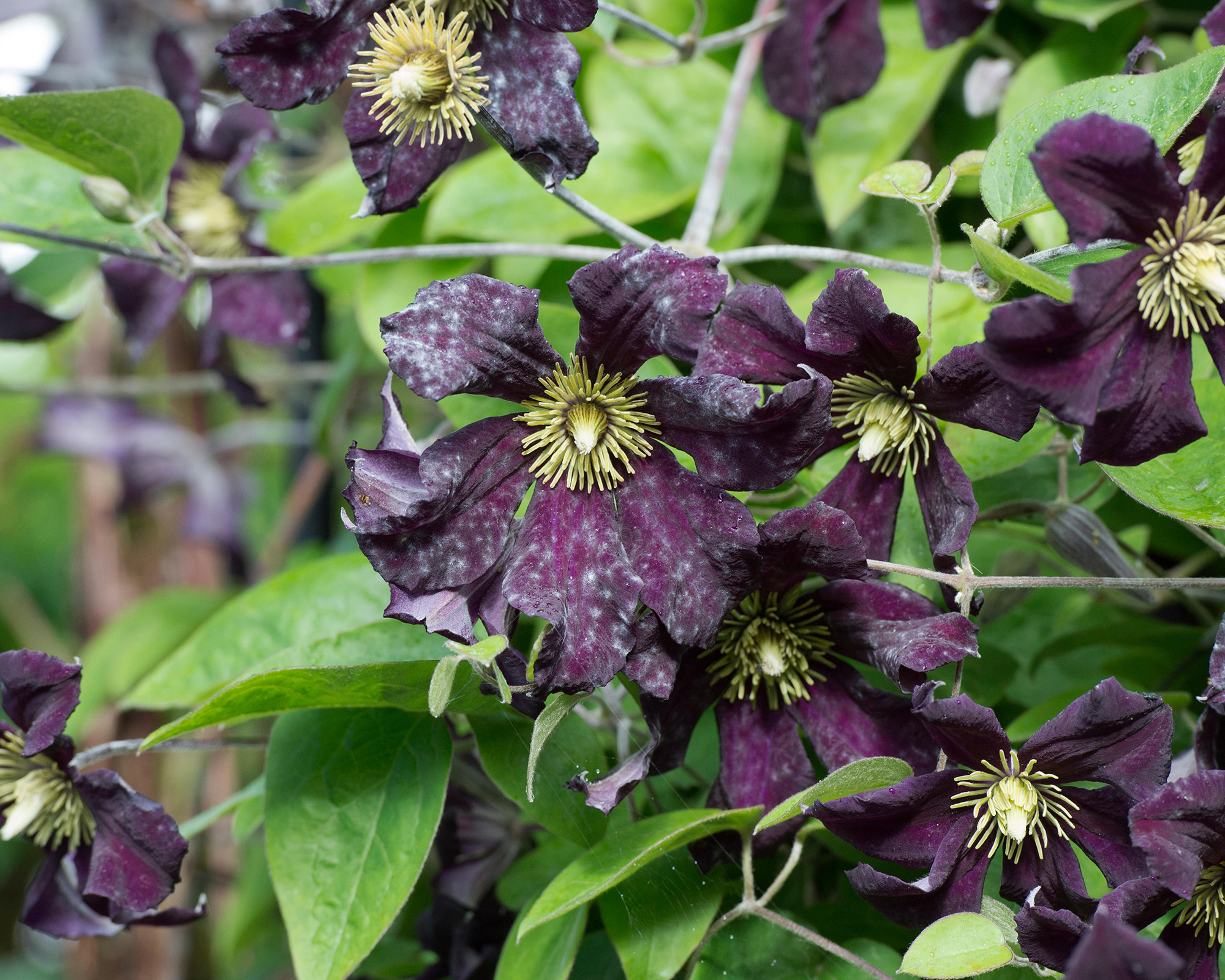
If left untreated, powdery mildew can spread from the leaves onto flower heads
How do you recognize powdery mildew?
Powdery mildew coats the plant with patches of a whitish powdery substance. It shows up on leaves first, sometimes causing them to yellow, but it can spread to stems, buds, flowers, and fruit. It's high on the list of common rose pests and diseases too.
How to treat powdery mildew in 7 easy steps
‘To tackle existing powdery mildew on ornamental plants, it’s best to start pruning shrubs' infected areas where possible,’ says Emma O’Neill, Head Gardener at horticultural charity Garden Organic. ‘Use resistant cultivars and clear any fallen infected leaves in fall to reduce infectious spores in spring.’
1: Remove infected parts
In order to remove the white mold on plants you must start by identifying infected areas and cutting them out. Ensure you also collect affected leaves that have dropped and are lying on the ground, especially in fall as one of your October gardening jobs.
Powdery mildew can linger on the plant or on fallen leaves left on the soil, and will then begin to release spores the following spring.
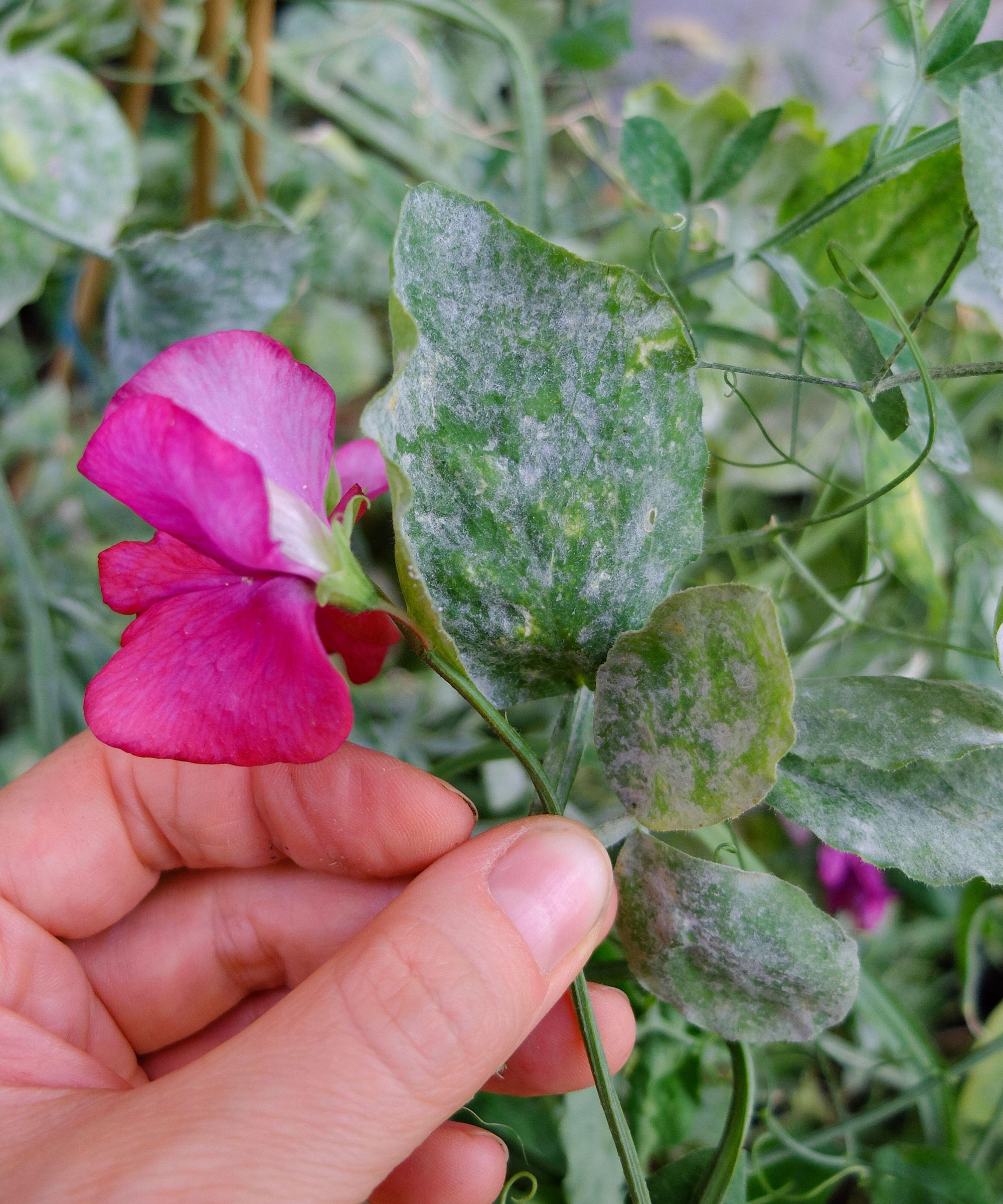
Look for patches of a white powdery substance
2. Treat the plant using a safe method
It is best to avoid using fungicides where possible, advise the RHS. This is because they can harm the eco-system, including damaging soil health, which in turn contributes to the disease resistance of plants.
There are several non-chemical methods that people use in organic gardening, but they cannot be officially recommended here, since they haven’t been legally approved.
One of the most popular is a very weak milk solution (one part fat-free milk to nine parts water) spritzed on plants that have had (or are prone to) powdery mildew. Some gardeners also employ a solution of baking soda or potassium bicarbonate.
But it’s important to stress that prevention is the best approach, since it guards the fragile health of the soil, which in turn makes plants more robust.
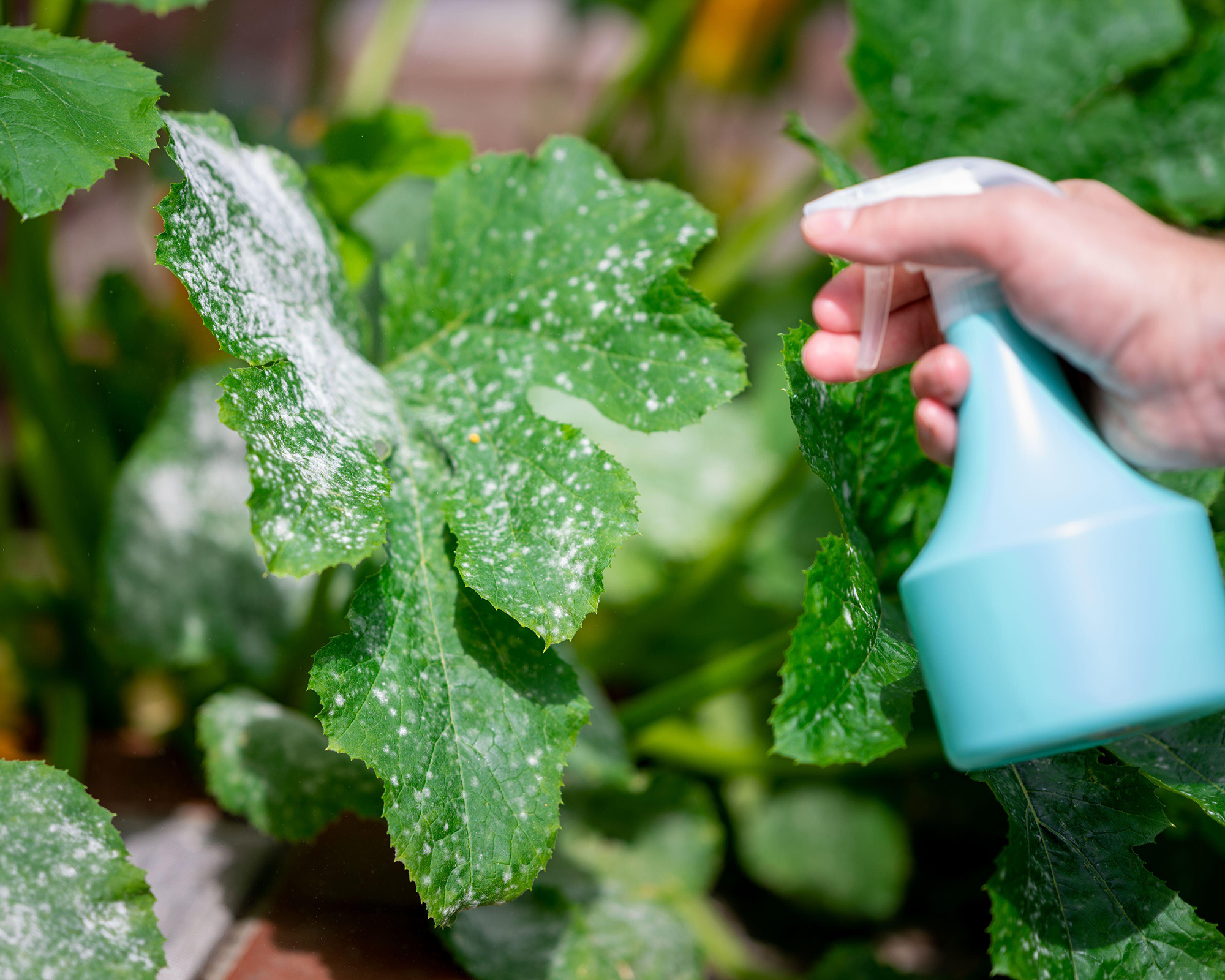
A diluted milk solution can be used to treat powdery mildew, but removing leaves is the best method
3: Mulch around the base
Mulching around the base of a plant infected with powdery mildew is a great preventative measure for the future. Mulch with good quality organic matter, such as peat-free compost, in order to boost moisture retention and drainage and feed the plant with nutrients, which will aid disease resistance.
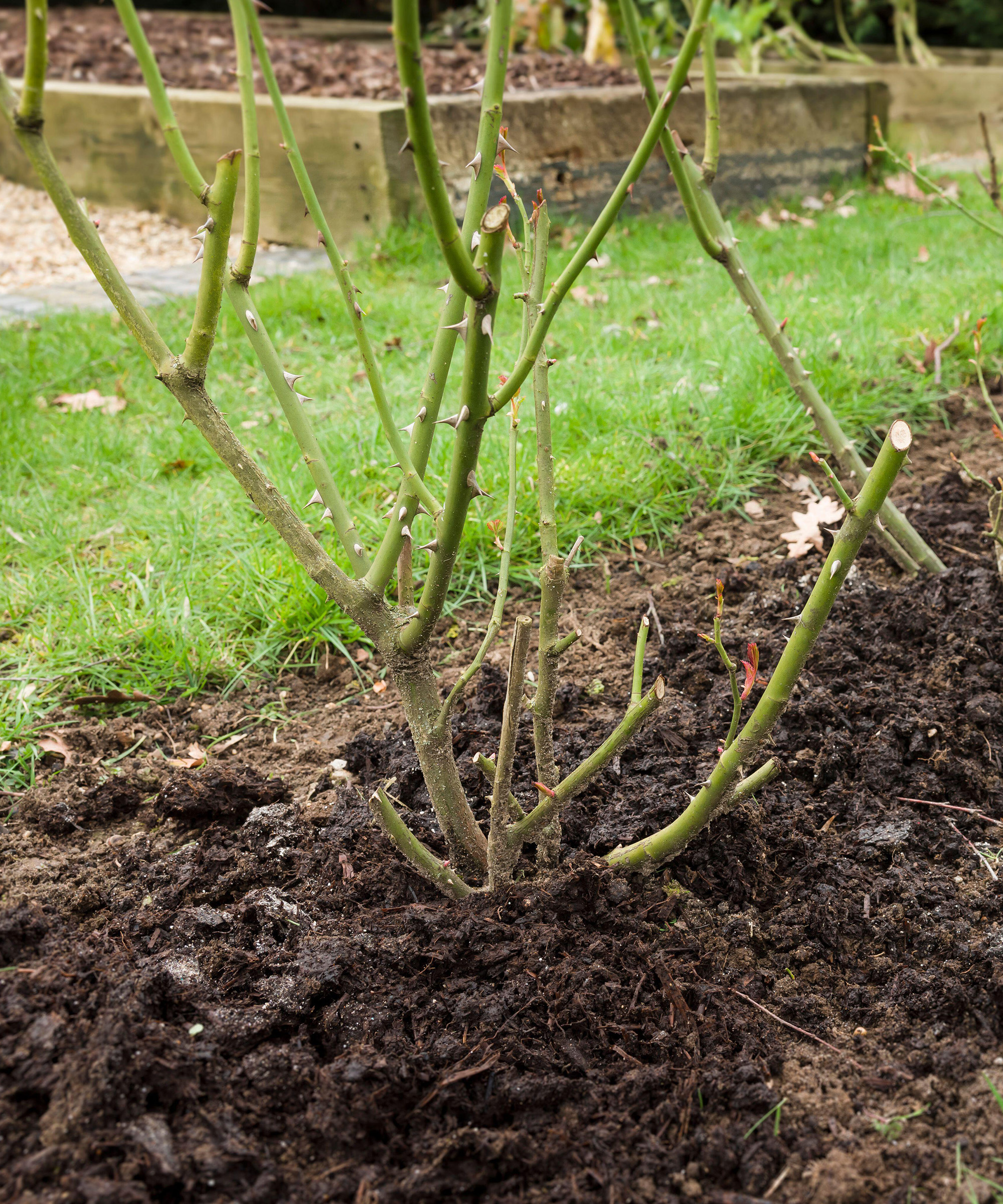
Mulching with compost will give a nutrient health boost to plants
4: Boost air flow
It's important to improve the air flow getting to your plant where possible. For example, by cutting out the old, dead, congested, and crossing branches of susceptible plants, such as apple trees and roses.
Climbing roses cramped in a trellis, against a sheltered wall, or in a corner are more prone to powdery mildew, which thrives where air is stagnant and still.
In an herbaceous border, opt for the more open, spaced style of a gravel garden, rather than dense planting.
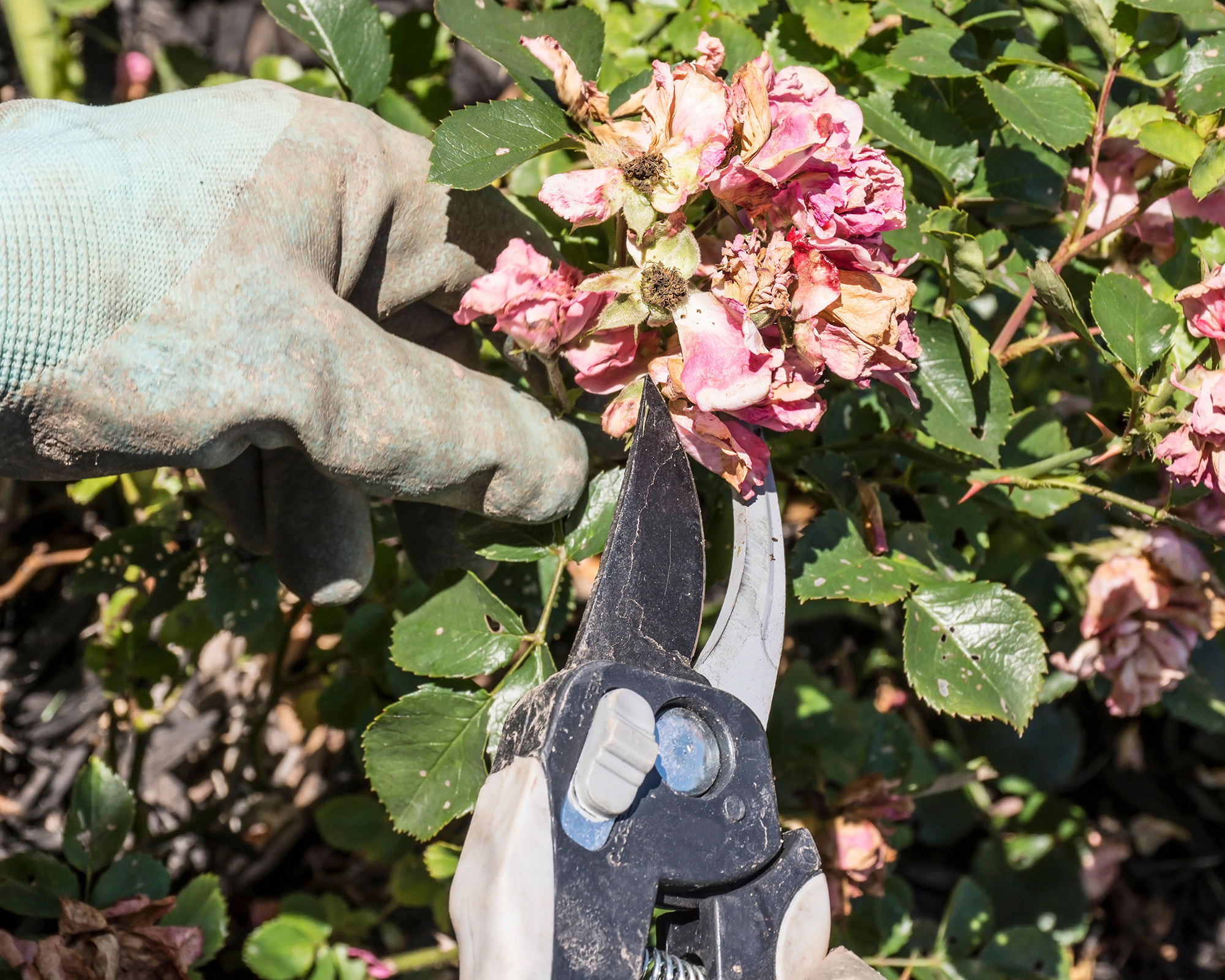
Increase air flow by removing dead flowers and branches
5. Change your watering habits
One method recommended for how to get rid of white fungus on plants is to alter how and when you water your plants. Powdery mildew thrives in drought, so water regularly in spells of dry weather.
It’s also vital to water at the right time: watering plants in the evening is best avoided to prevent humidity; first thing in the morning, it’s preferable to water at the base; but if you can water at mid-morning, you can wet the leaves very briefly, as this helps to reduce powdery mildew at that time of day.
Avoid using nitrogen-rich foods (which soften the leaves, making them more vulnerable), but add a potash-rich fertilizer (such as tomato food) to the watering can every fortnight during the growing season to toughen leaves up.
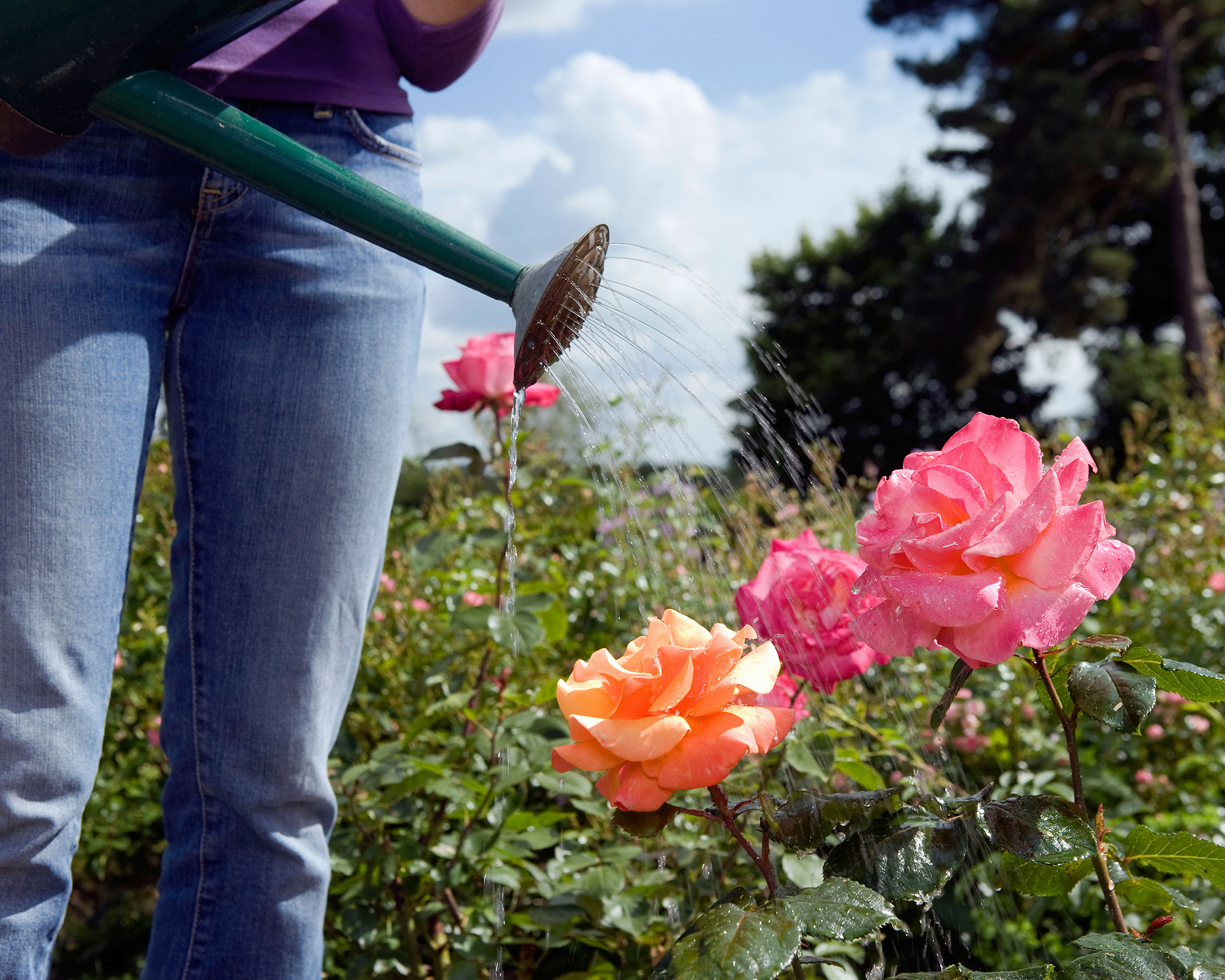
White mold on plants is more likely to develop in dry conditions
6. Use companion planting
Using companion planting to prevent white mold on plants is good idea. Plant supplier Sarah Raven has had great success underplanting her roses with salvias in order to reduce mildew and black spot.
She suspects that this relates to a high sulfur content in the deliciously pungent leaves of Salvia microphylla varieties, such as ‘Nachtvlinder’ (claret) and ‘Cerro Potosí’ (hot pink), which bloom in bold color for months and feed bees.
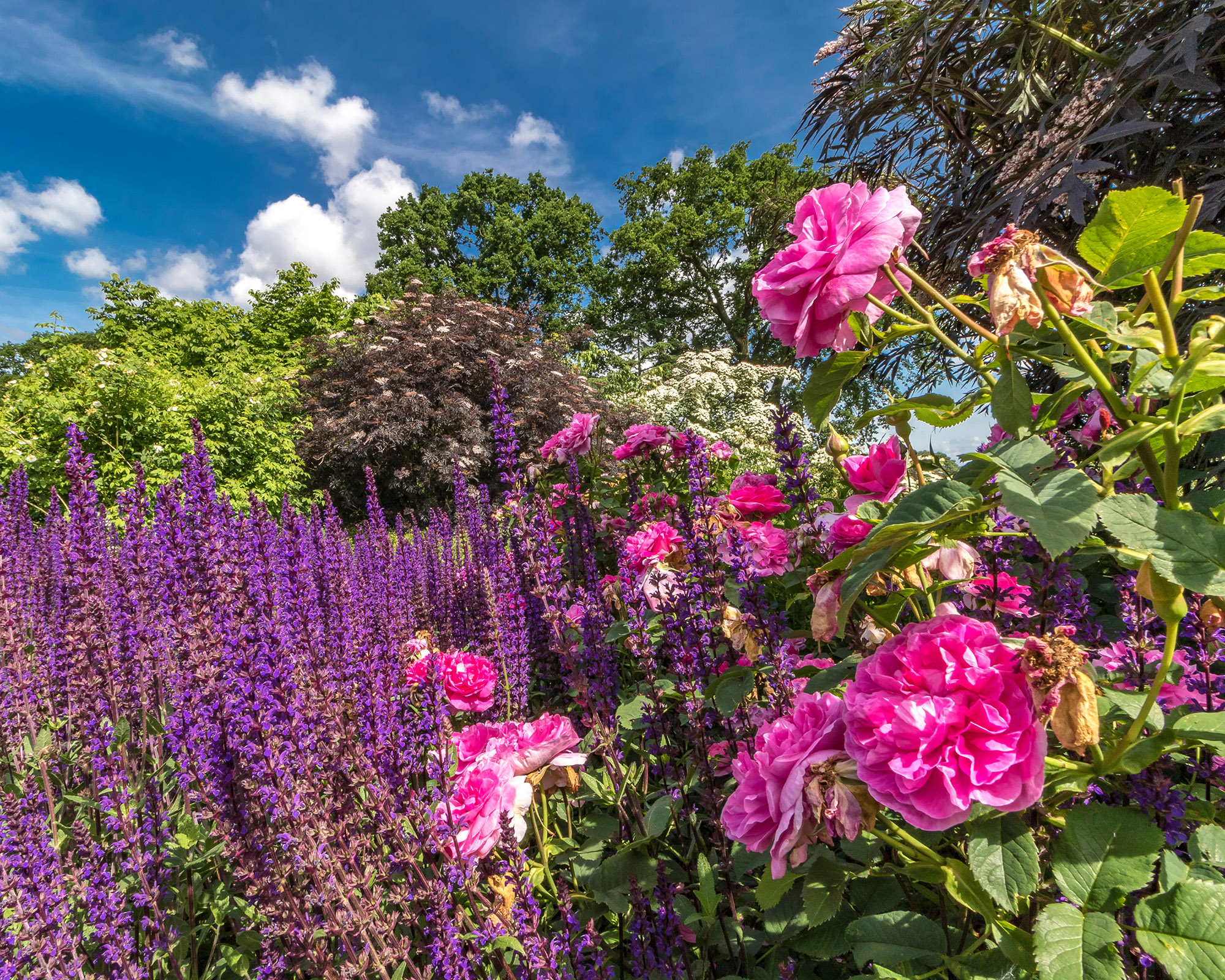
Try using companion planting to reduce chances of powdery mildew
7. Replace with resistant plants
Do this as a last resort if the powdery mildew drives you mad, especially in ornamental garden borders, where it can be an eyesore. For example, if you want to grow asters, opt for the healthiest forms, such as Aster x frikartii ‘Mönch’.
Buy your plants from specialist suppliers, such as David Austin for roses, Keepers for fruit, and Tamar Organics for vegetables, who can advise you on which varieties are the least prone to white mold on plants.
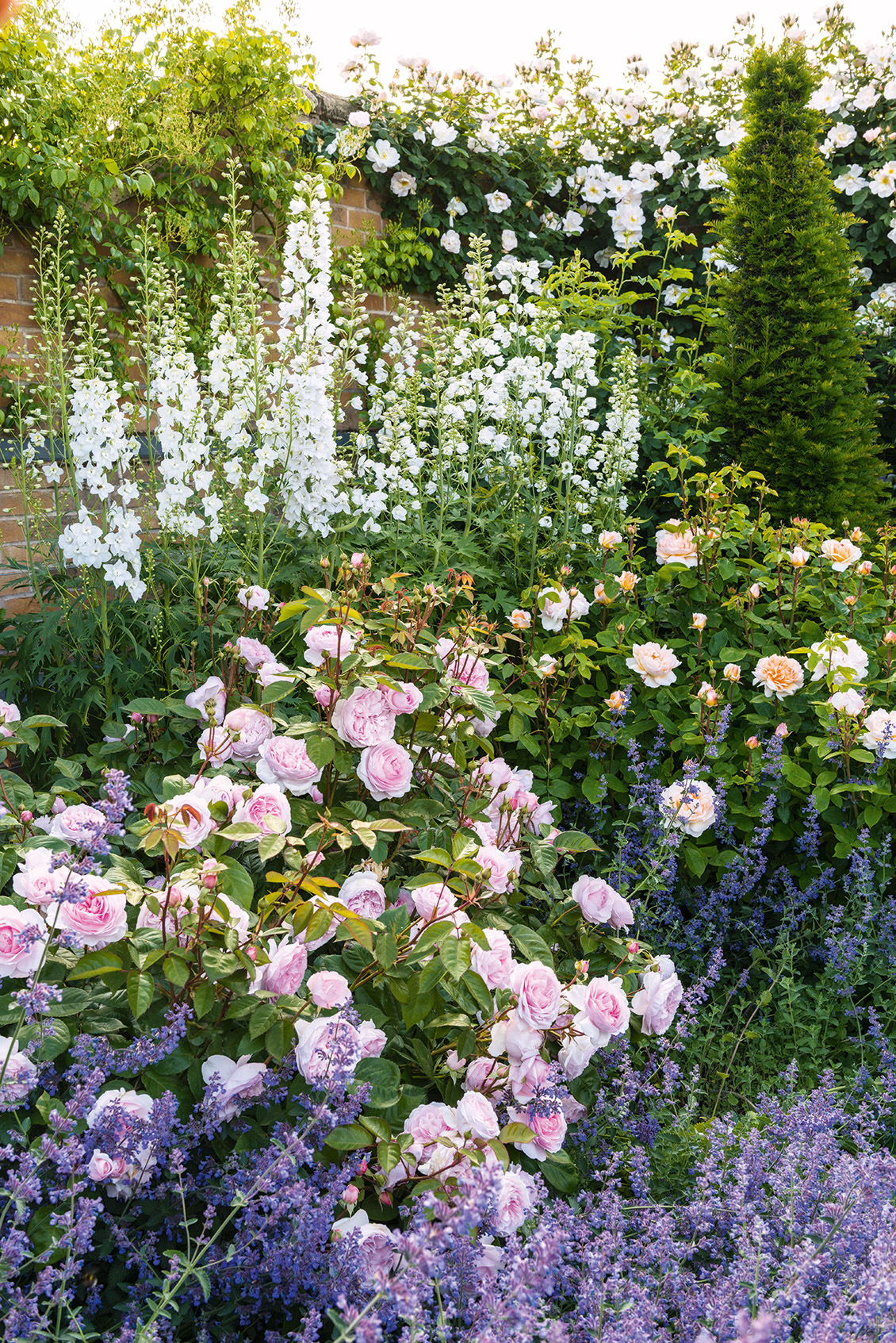
Buy your roses from specialist suppliers such as David Austin
How do you prevent powdery mildew?
‘Plant in the right location, avoiding areas that are too sheltered with little air circulation,’ advises Emma O’Neill. ‘Aim to give your plants enough room to keep humidity down and to allow free flowing air.
Also, provide good drainage and avoid overhead watering, but still water regularly during dry spells.’ It’s also a good idea to buy varieties that are less susceptible to the white fungus, where possible.
For example, the courgette ‘Dunja’ F1 is less likely to be plagued by powdery mildew, as is Helenium ‘Sahin’s Early Flowerer’ and Phlox paniculata 'Monica Lynden-Bell’. And some plants don’t succumb at all, including all types of lavender, salvia, and cistus varieties.
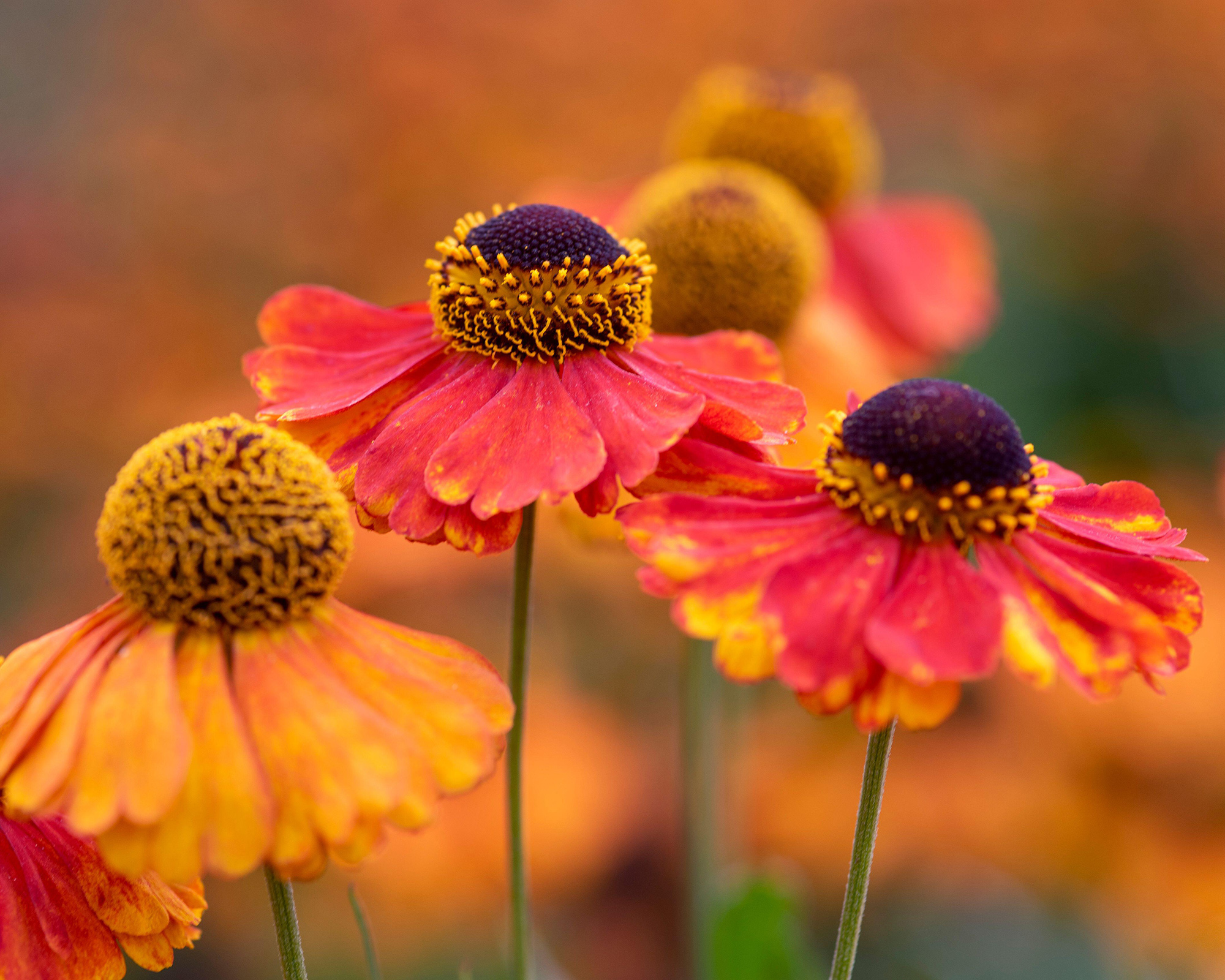
Helenium ‘Sahin’s Early Flowerer’ isn't susceptible to white mold
What plants are more susceptible to powdery mildew?
Some plants are more prone to the fungal disease than others. They include specific ornamentals (such as roses) and edibles (including apples). Let’s look at some of them in more detail:
- ROSES: ‘The best way to avoid powdery mildew on roses is choose varieties that are resistant to it,’ says leading rose expert and international rose-garden designer Michael Marriott. ‘Some will get it at the drop of a hat, while others never at all. Some ramblers are particularly susceptible, but that can be partly due to dryness at the roots, which often results in this disease. When the soil starts drying out (often at the foot of walls or close to trees), give it a good soaking. Water in the morning though, as watering in the evening, especially if you get the leaves wet, can easily encourage powdery mildew and indeed rose black spot too.’ Many modern types of roses show great resistance to sickness, including powdery mildew – for example, Elizabeth (a new shrub rose from David Austin) and Lady of the Lake (a rambling rose bred by David Austin). A few older roses also show good disease resistance, including the beautiful climber ‘Madame Alfred Carrière’, which has blush-white scented flowers over a long period. Likewise, rugosa roses (such as ‘Blanche Double de Coubert’) are pretty resilient.
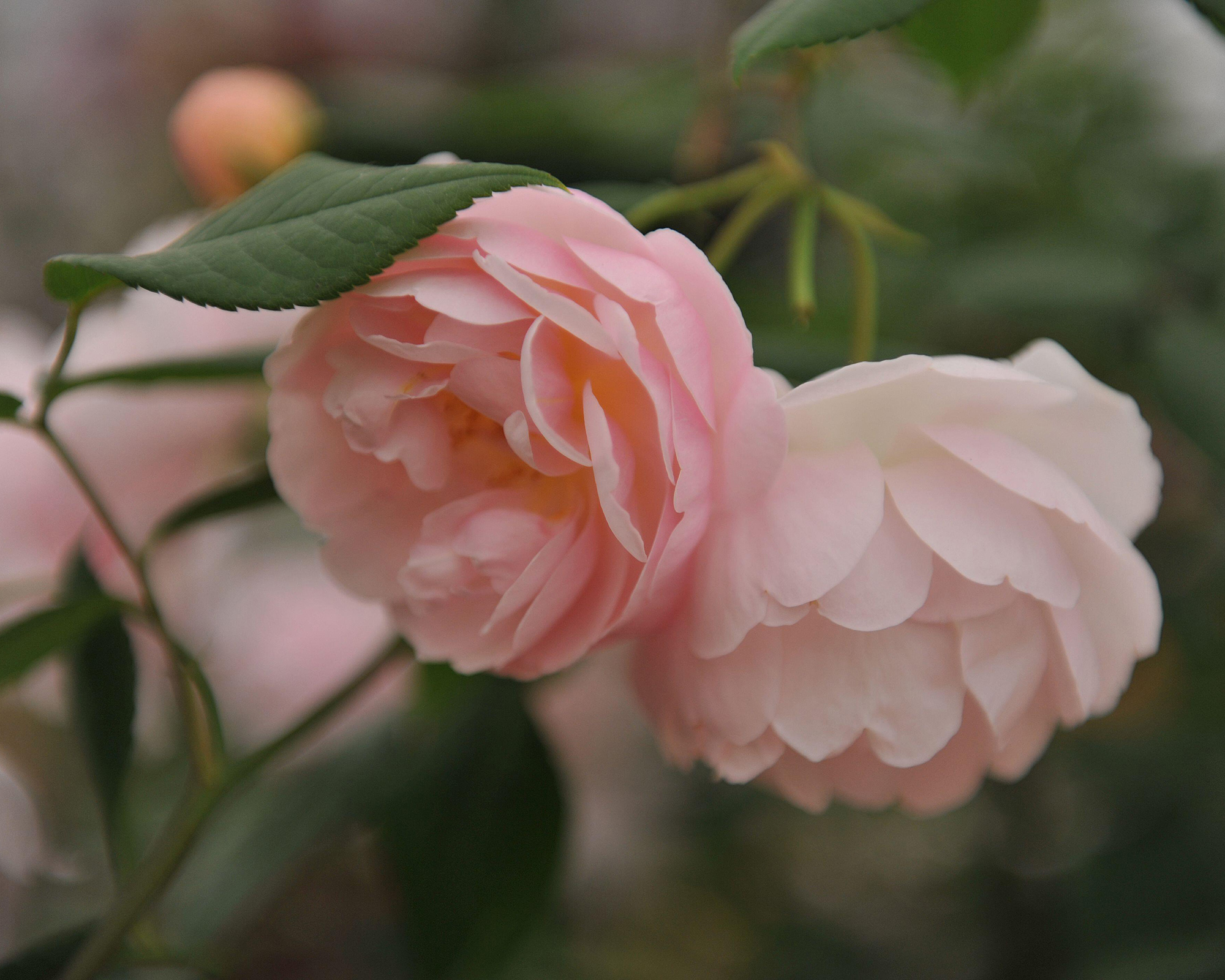
Lady of the Lake rambling rose, available from David Austin Roses
- WISTERIA: While powdery mildew shows up on most plants as very distinctive powdery white blotches, on wisteria it is a lot less obvious. Look for brown marks with a yellow rim on the leaves. Thankfully, it's not a huge problem for wisteria, so there is no need to panic, but regular bi-annual pruning and soil improvement will greatly aid in mildew prevention.
- OTHER ORNAMENTALS: Various flowering plants can be hit by powdery mildew, including phlox, begonia, verbena, honeysuckle, delphinium, and scabious. When growing plants in pots – especially at the base of a wall – do all you can to enhance air flow around them. Likewise, in the border, give anything prone to powdery mildew elbow room by cutting back surrounding plants. Water well in dry weather. And add an annual mulch of organic matter (such as peat-free compost) to boost moisture retentive and drainage.
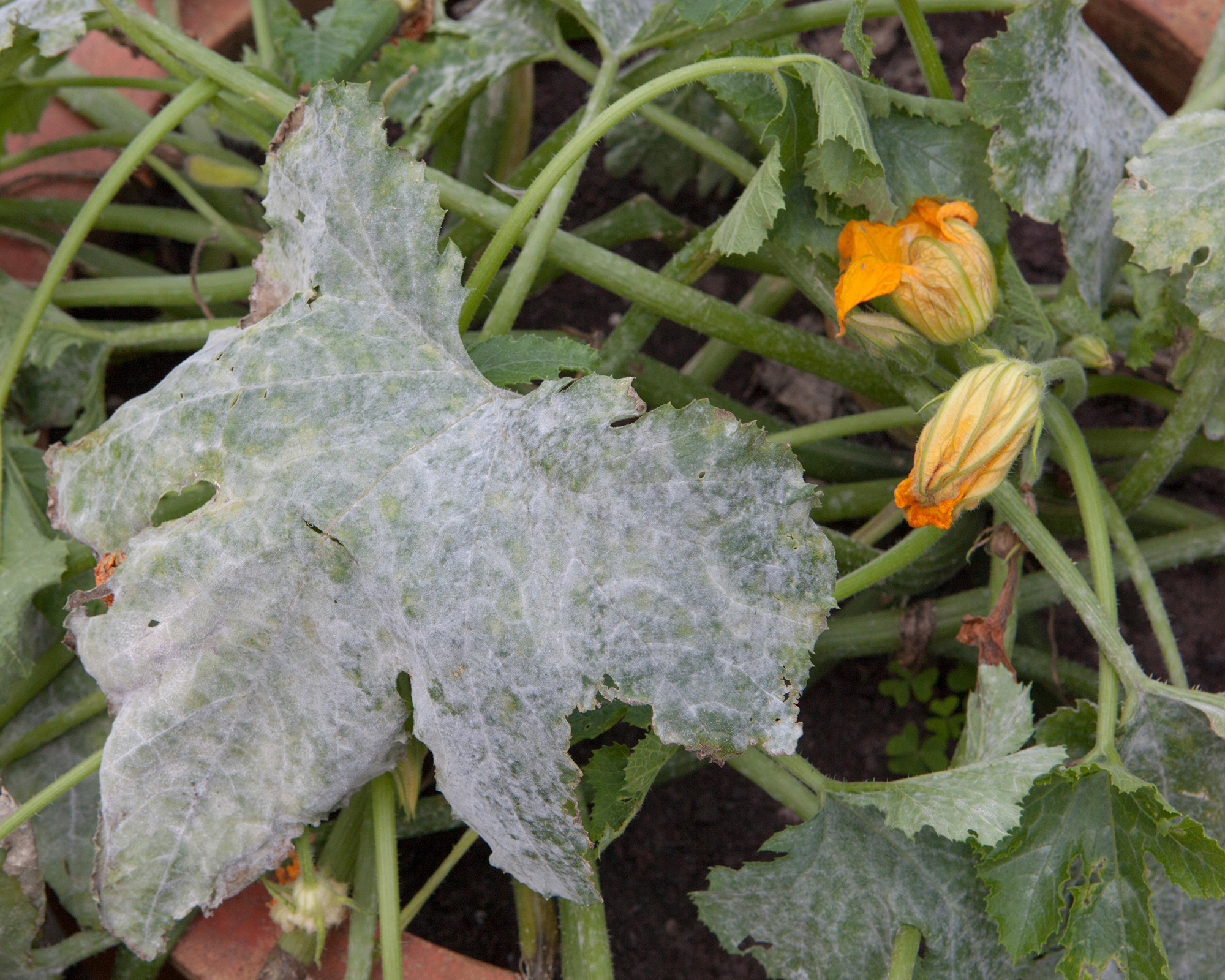
Powdery mildew on courgette leaves is more of an aesthetic problem than a destructive one
- VEGETABLES & SALAD: Powdery mildew can affect various edible crops, including peas, squash, courgettes, and cucumbers, but many experts ignore it. ’My favorite method is not to worry,’ says eco-friendly gardener Charles Dowding, who's no-dig edible gardening books are available on Amazon. ‘Powdery mildew is not destructive. It just affects older leaves and therefore is not harming growth of the plant, it’s just enabling natural dieback of now-useless leaves. It’s more an aesthetic problem and you can cut off the affected leaves to make plants look nicer. Mostly I leave affected leaves on the plant. An exception is cordon cucumbers undercover where I remove the lower, older leaves because that increases airflow and ventilation around the plants.’
- APPLES: Podosphaera leucotricha powdery mildew appears as a whitish coating on the underside of apple leaves. It can eventually coat the entire leaf and may affect fruit in the long-run. ‘During winter pruning look for, remove and destroy infected tips of branches,’ advises specialist fruit nursery Keepers. ‘These can be identified by their stunted growth and remnants of the white powdery fungus. During the growing season infected shoot tips are easy to spot and should be removed and destroyed. Problems with powdery mildew can be minimised by choosing varieties which are resistant to the disease.’ These include ‘Egremont Russet’ and ‘Discovery’.
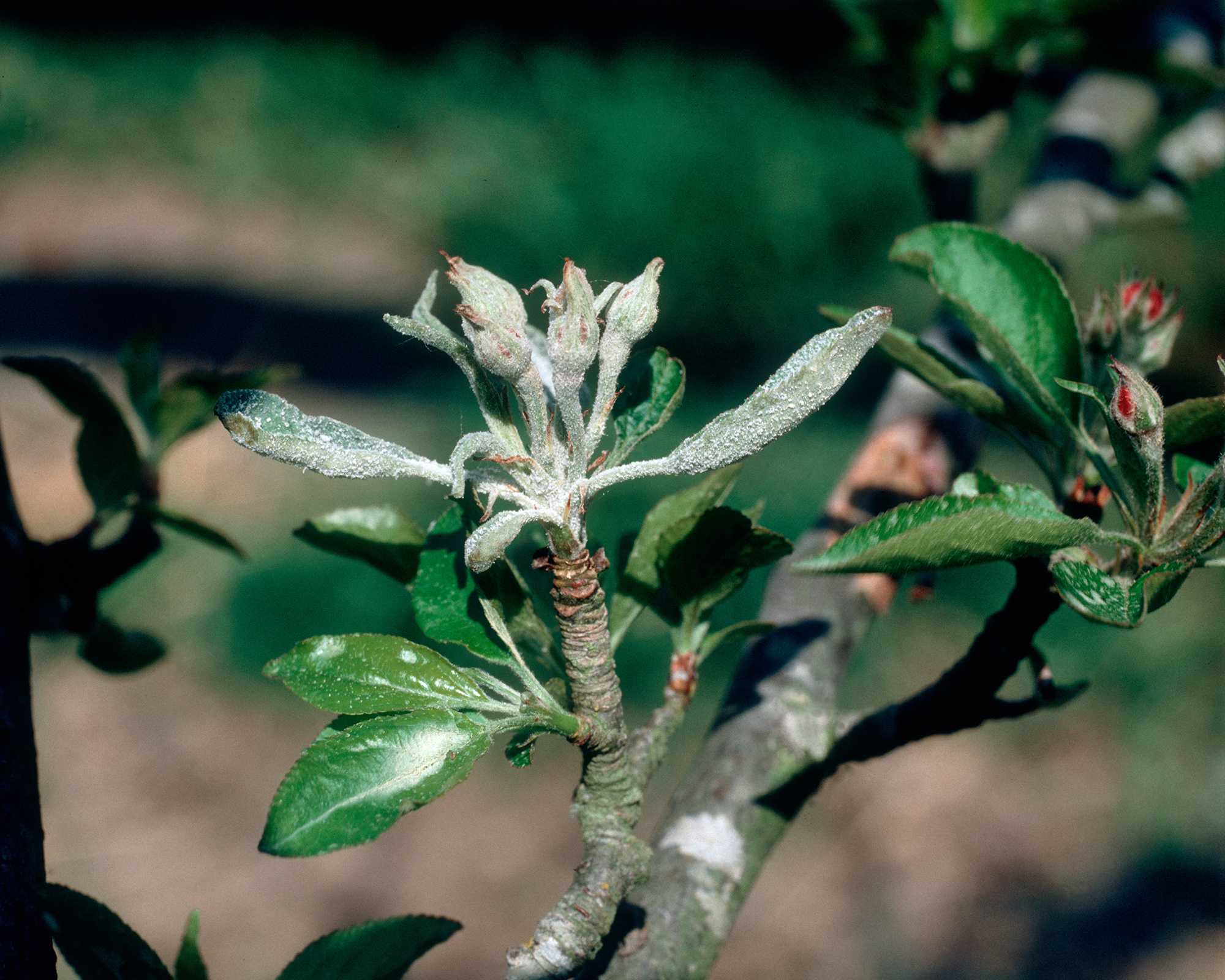
Remove infected shoot tips and destroy them
What kills powdery mildew instantly?
Fungicide can be used, but is not recommended by the RHS. Eco-friendly garden methods that protect waterways and soil health are preferable. It is quick and easy to cut out the affected parts of the plant.
Removing plants is more hygienic (in terms of curbing the spread of the disease) than simply wiping off the white mold on plants. It usually appears on the leaves first, but can spread to all parts of the plant if not removed, and may spread to surrounding plants, if they are in the same genus or plant group.

Teresa has worked as an Editor on a number of gardening magazines for three years now. So she is lucky enough to see and write about gardening across all sizes, budgets and abilities. She recently moved into her first home and the garden is a real project! Currently she is relishing planning her own design and planting schemes. What she is most passionate about when it comes to gardening are the positive effects it has on our mental health to grow and care for plants, as well as being great for the environment too and help provide food and shelter for wildlife.
